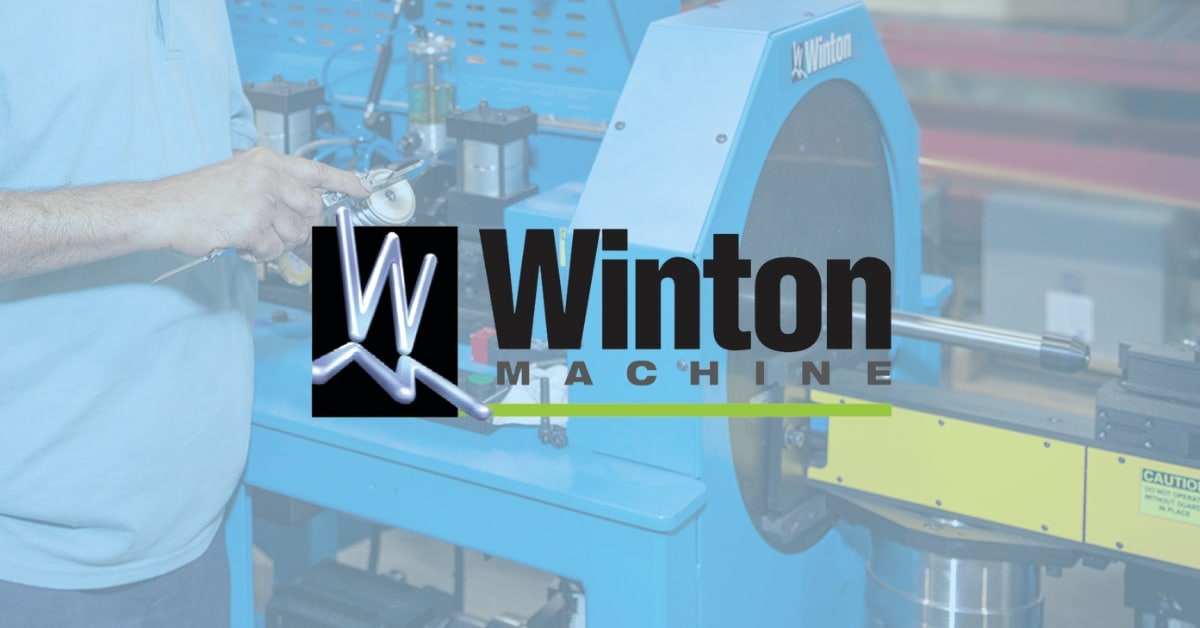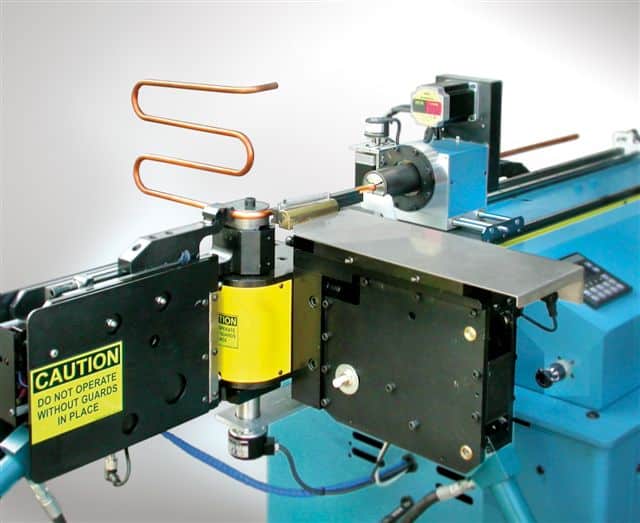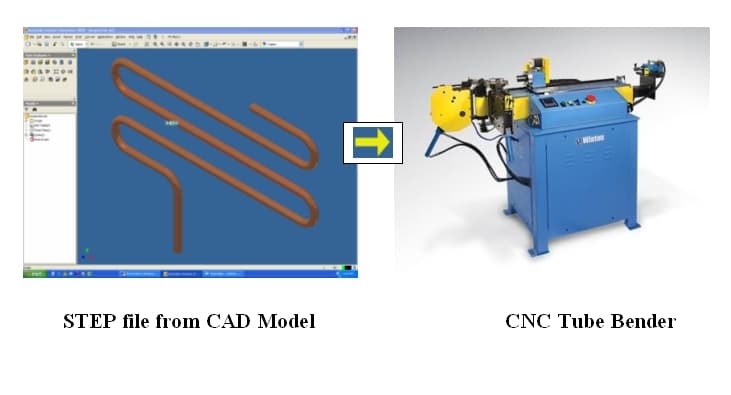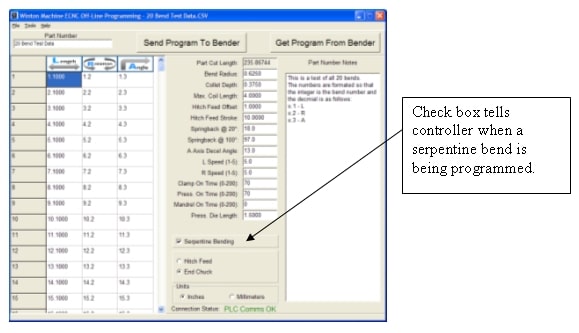Serpentine Tube Benders Made Simple
Why Serpentine Tube Bending
The answer is simple; to transfer heat. A tube bent into a shape of a serpentine allows an original equipment manufacturer (OEM) to extract heat from one environment and transport that heat to another area. For example, a refrigerator has heat energy contained within the products that a user wants to keep cool. Product examples may include milk, meat, or even butter. The goal of a refrigeration system is to extract the heat out of the refrigerated products. A tube bent in the shape of a serpentine is an efficient solution to help extract this heat.
A serpentine profile is an efficient way to maximize the amount of surface area (and thus refrigerant) needed for heat transfer given a limited amount of space. Being that a serpentine profile is most often one continuous bent tube, by default the number of connections is limited to two (the two ends) thus reducing an OEMs warranty costs.
So, there seems to be a need for serpentine bent profiles. From a fabrication view point, the next logical question becomes “what are the options for making such a configuration”. It turns out that the options range form very low tech hand bending to CNC tube benders.
Bending by Hand
Quite often in the development process of a new configuration, hand benders are employed to produce the needed serpentine. With a drawing in hand, an operator often takes out a scale, marks the tube where the bends will start, and then starts bending. The goal here is to deliver a bent tube for testing that looks like the drawing. Once tested and accepted, the production models are expected to function like the prototype tested.
Quite often production starts and the process of making the serpentine bent profile becomes a little easier with a refined means of laying out the tube. The hand bending process often continues with an Imperial Eastman type hand bender with the level of quality tracking the level of focus of the operator. A significant advantage of the hand bending process is that the initial investment is light.
As with any serpentine tube bending process, a hand bender must have the needed clearance within the bend tooling in order to successfully form the serpentine profile.
CNC Bending
CNC bending can bring a whole new level of quality to the serpentine bending process. To start with, coils produced on a CNC result in more repeatable bent profiles. With the right material handling system, a CNC serpentine coil can be produced flatter when compared to hand bending. A flatter/straighter coil will provide for an increase in heat transfer.
Turbo Charging the Programming Process
State of the art software can allow engineering to send a CAD generated STEP file of the bent serpentine profile directly to the bender.
This helps save time on programming the serpentine at the CNC bender by eliminating the need to key in the LRA (a.k.a. YBC) data points. With the STEP file converted to LRA bender data, the first bent part can be quickly produced.
A payoff supporting a bulk spool of tubing can add value to a production operation. Depending on the speed that the serpentine bender pulls the tubing forward, the payoff may not have to be powered. An inline cutoff can also add value as the cutoff itself is often integrated into the CNC controller.
Features of a CNC Serpentine Tube Bender
When looking for a CNC bender to produce serpentines, a few vital machine features are critical. First, does the bender have the clearance to bend 180° back and forth? A standard rotary draw bender (CNC, NC, etc.) often does not have the clearance for bending a serpentine profile. The critical clearance needed is behind the clamp die and behind the pressure die itself. A typical rotary draw bender will have interferences behind these dies thus preventing a coil from being produced per the drawing. Some tube bender controllers make serpentine bening easier. It this case the software knows when a serpentine bend is being programmed. This in turn automatically adjusts certain programmable settings
Serpentine coils often make use of a significant amount of tubing. Hitch feeding the tube into the bend zone is often far better then trying to end chuck the tube into the bend zone. By making use of a hitch feed process, the length of the tube bending machine itself becomes less important.
A CNC serpentine tube bender will provide for the needed clearances in all aspects of the bending process. This includes the carriage that presents the tube to the bend zone. As a 180° bend is being formed, a 48” length serpentine coil must clear the carriage as the tube bends towards the 180° mark. Without this clearance, the intended profile can’t be achieved.
When programming a serpentine, certain variables within a tube bender’s controller may have to be compensated to ensure the necessary clearance is available to bend a serpentine profile. Some CNC controllers provide “serpentine functions” to reduce the programming burden.
One common approach to serpentine bending makes use of a rotary draw tube bender. A rotary draw tube bender with the necessary clearances will make a 180° bend (return bend) and then rotate the plane 180° to position for the next return bend. This is known as an R axis or B axis move. This works well for the shorter range of bent serpentines. The material handling aspects of bending a short serpentine profile don’t always come into play.
However, as the distance between the return bends increases, the need to bend both CW and CCW without making a plane change becomes more important. This is where a CW/CCW type bender starts to look attractive. A CW/CCW type CNC bender eliminates the need to make a plane rotation between return bends and thus improves the overall flatness of the final bent profile. This equates to better quality and better heat transfer.
Material Handling
Once the tube bender has all the needed clearances to form a part, the next item to address is the material handling aspects of the bending system. Rotary draw tube bending has been around for decades. However, the ability to manage the bent tube during the bending process continues to evolve. With serpentine coils ranging in length from a few inches to several feet and beyond, the ability to manage the post bent material becomes most important for quality reasons.
One solution is a static table surrounding the tube bender. This approach is often employed to help guide the post bent material as it swings from bend to bend.
Another approach is a rotating support table that is synchronized to the bend head. As the bend head rotates, so to dose the support table. This approach reduces the drag on the bent profile as it rotates about a bend head.
Having a 3/8” copper tube formed into a serpentine profile with 20 bends and 60” between each bend requires good material handling. Without sufficient means to support the post bent material, the final product will not be flat causing less then efficient heat transfer. OEMs looking for a competitive market advantage strive to improve the heat transfer aspect of their products. They let their customers know that flat bent profiles are being produced resulting in better refrigeration at the point of sale.
Designing For Production
There are a few guide lines to serpentine tube design. First, if at all possible, make the centerline bend radius no less than 2x the tube’s outside diameter. Therefore, if you are bending 3/8” tubing, make sure the centerline bend radius is at least 3/4″. As the centerline radius becomes less then 2x the tubes outside diameter, the need for a mandrel increases. With the bulk material often being spooled from a large coil via a payoff, a mandrel is not always desirable.
Try to design the tube so that an operator will not have to be involved to help support the tube during the bending process. It’s common for a series of serpentine bends is followed by a 90° bend that comes back into the machine or onto the formed coil itself. This means that an operator has to manipulate the tube during the bending process. Although often done, this is a safety concern.
If possible, have an understanding of the limitations of the tube bender to be used. Such questions as how small of a centerline radius can be formed before an inference with the tube bender is realized? Remember, clearance behind the pressure die and clamp die often come into play. Every CNC bending machine, regardless of the manufacturer, has limitation. Knowing these limitations is most helpful before the tube is sent off to be made. If you are not sure of the limitations of a tube bender, start talking to the machine operator, sales representative, and/or the manufacturer of the CNC bender itself.
When evaluating a serpentine coil for its production worthiness, there may be 1 or 2 bends that cause significant fabrication concerns. It may be that leaving out these bends and installing them as a secondary operation may provide for a good production solution. As a CNC bender is making a multi bend part, an operator can be making the secondary bends to finish the part. Also, it may be that instead of leaving out a specific bend, a partial bend can be made thus allowing the operator to finish the bend while the next coil is being produced on the CNC.
Advantages/Disadvantages
The hand bending process will produce a serpentine coil with a low initial investment. That is the up side. The down side is that human error can often find its way into production. Also, hand bending has proven to require focused attention in order to produce a flat serpentine coil.
CNC tube bendrs on the other hand have a much higher initial investment. However, once past the initial investment, benefits may involve the transfer of a STEP file directly from CAD to the bender, more consistent coils attached to a refrigeration unit, and flatter/straighter coils for better heat transfer. And lets not forget that the attention span required to operate a CNC is far less than that needed to bend by hand.
Conclusion
CNC serpentine tube benders are not always the right answer. Mid to high production rates coupled with inexpensive labor rates can make use of the hand bending process. Nevertheless, when consistent quality and reliable heat transfer are required, employing a CNC to make the bends often makes good financial sense.

George Winton, P.E. designs and builds CNC tube fabrication equipment for Winton Machine in Suwanee, GA. He can be reached at gwinton@wintonmachine.com or 888.321.1499.
Related Documents
About the Machines We Build
All of our semi-rigid coax and tube fabrication machines at Winton are designed, manufactured, and tested in-house. We have a large line of standard products as well as the ability to engineer the best solution for our customer’s needs. Our experienced sales staff makes sure that our customers can justify their capital equipment investment by offering a solution that is exactly what they need in order to manufacture their parts. Please contact us today to discuss your project.





